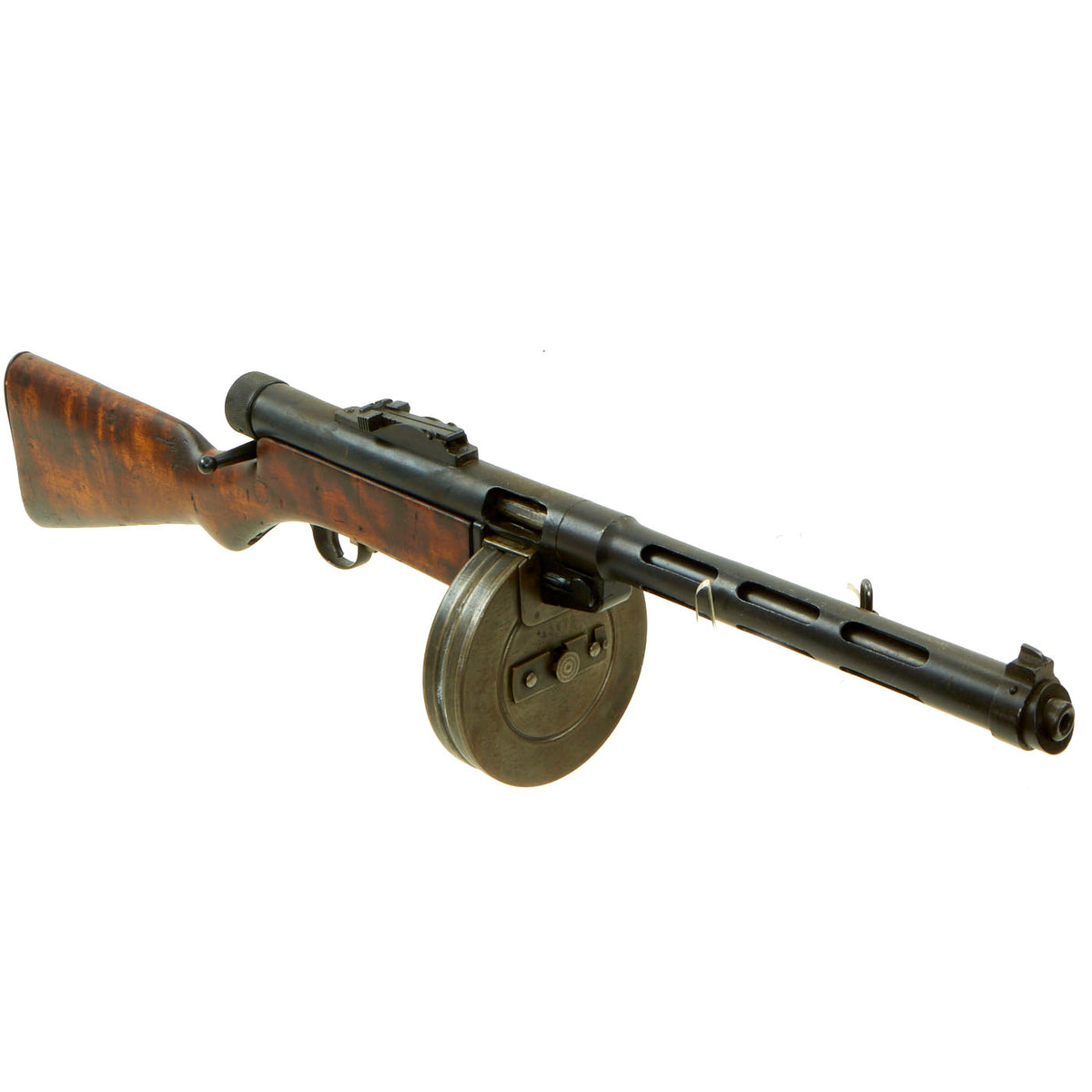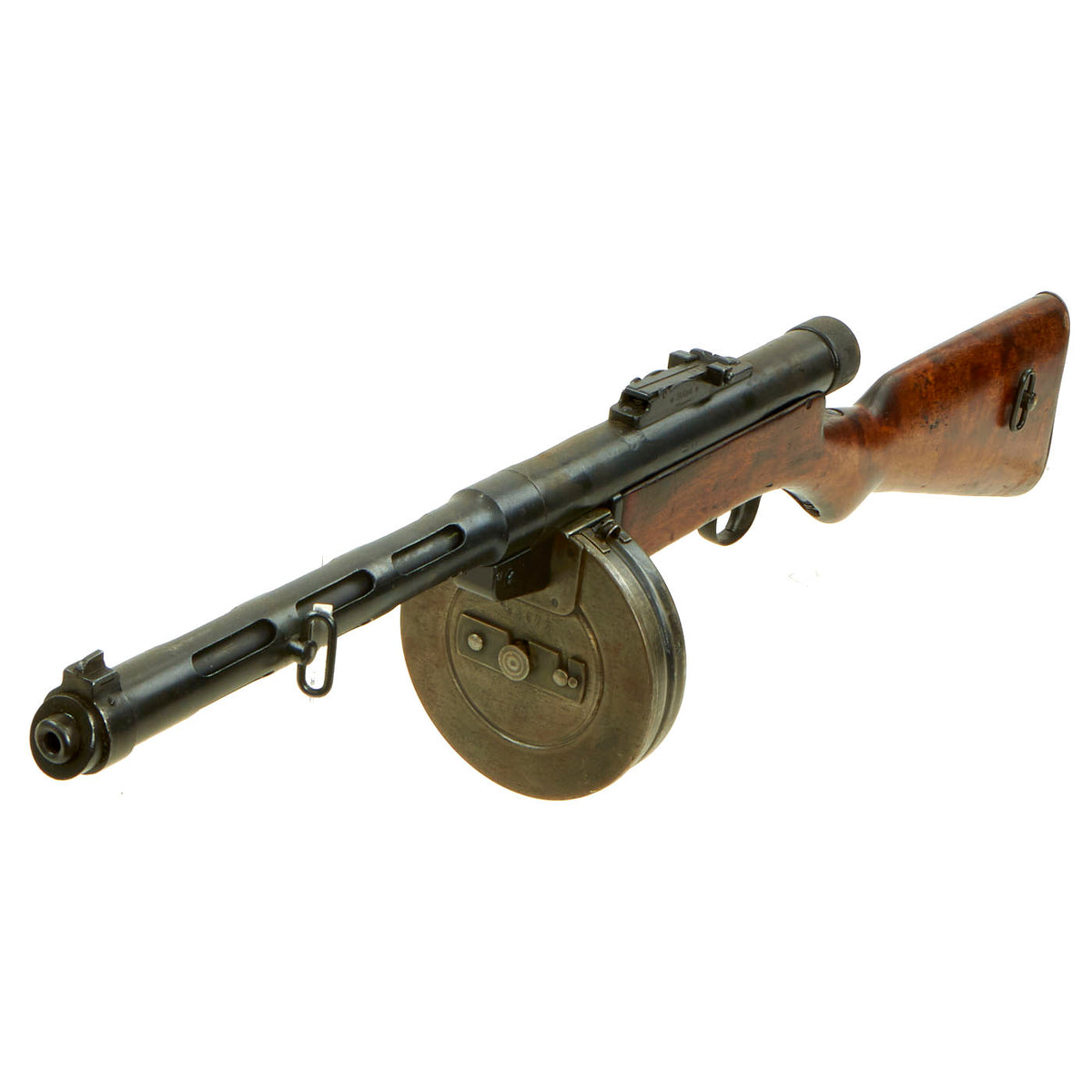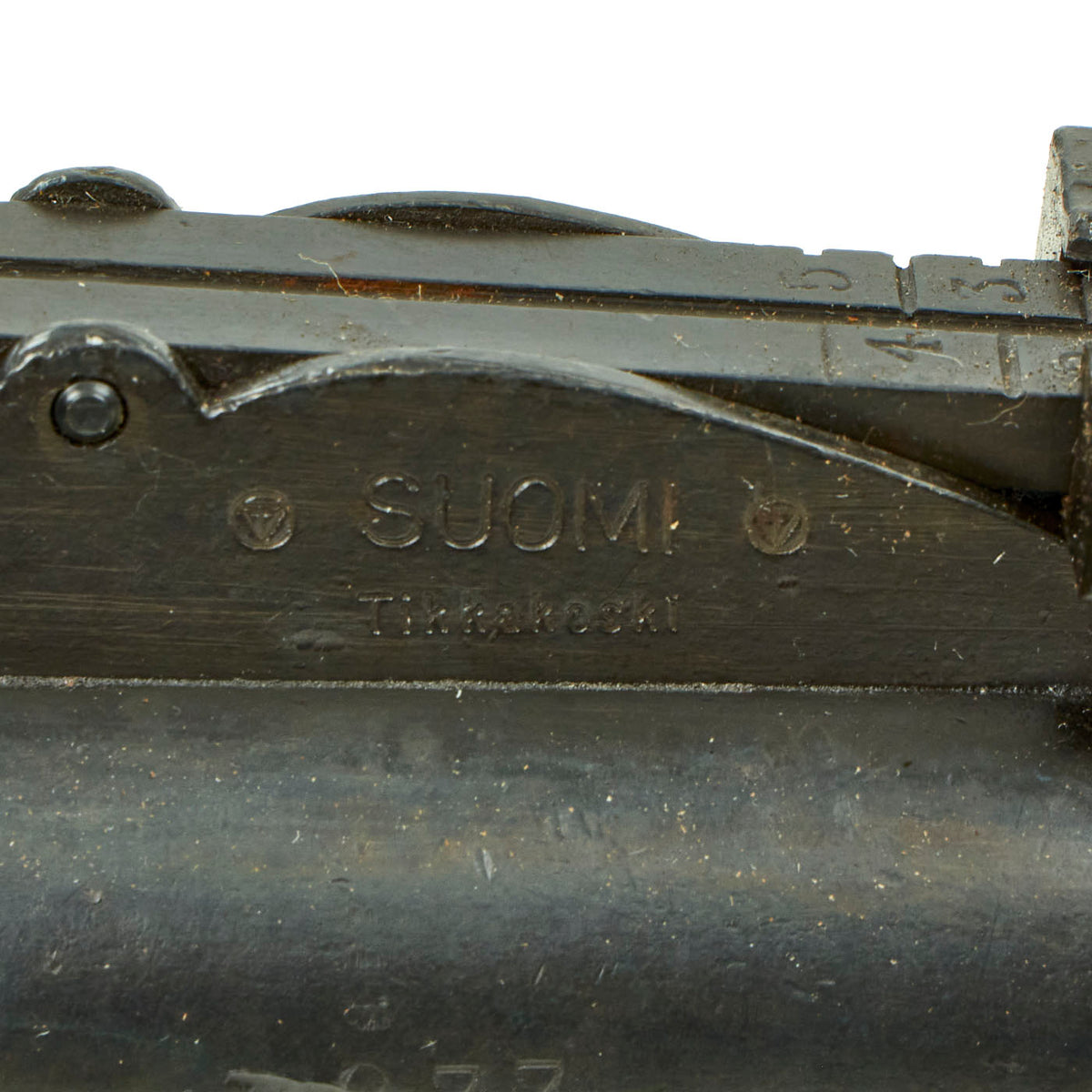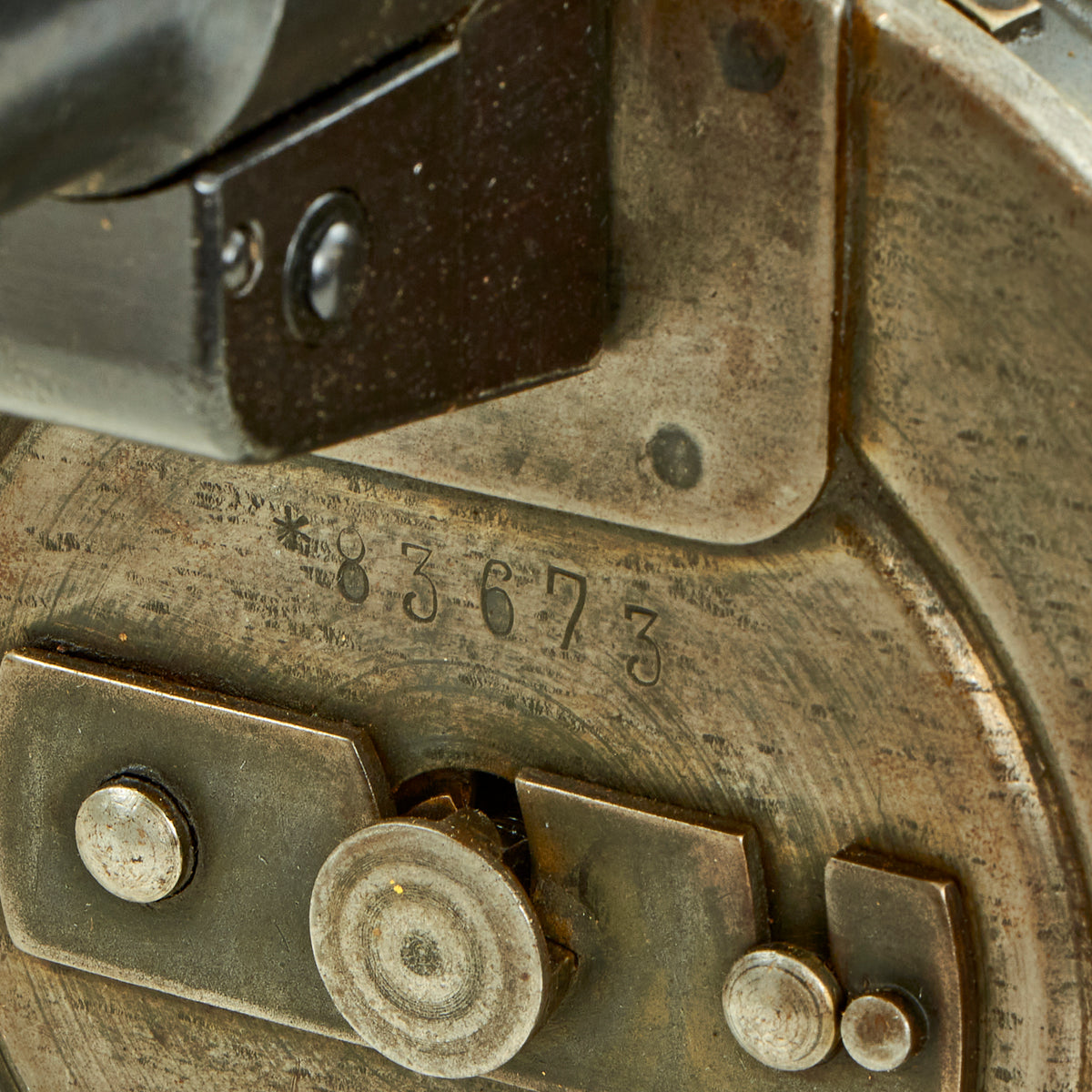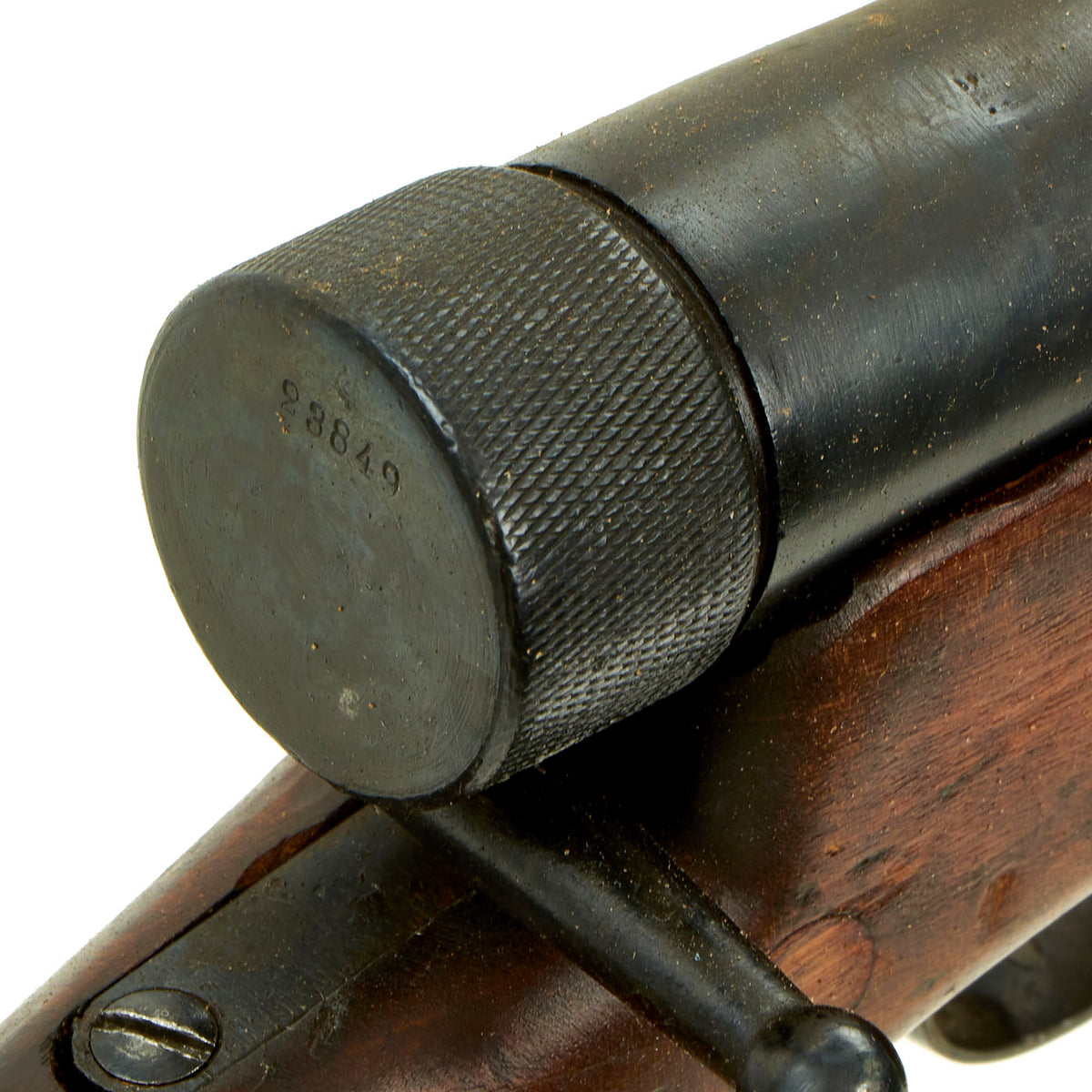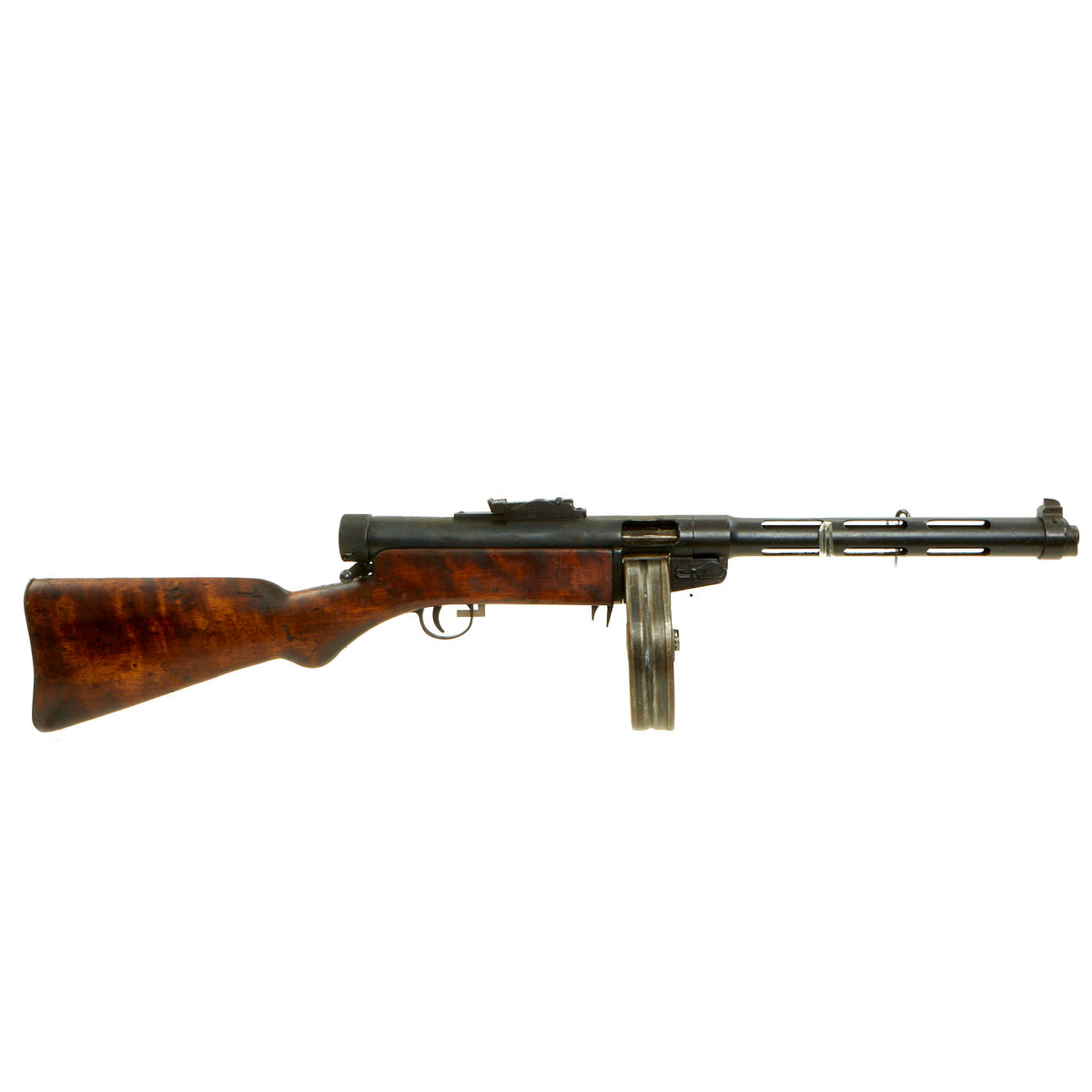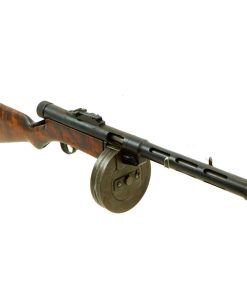Original Finnish WWII Suomi KP/-31 M31 9mm Display SMG with Drum Magazine – Serial 977 Original Items
$ 1.750,00 $ 437,50
Original Item: Only One Available. Offered in great condition is this lovely Finnish Suomi M-31 Display Submachine gun, built on a BATF approved re-welded display receiver. It has had 3 inches totally replaced with solid bar stock per BATF regulations, and has had the bolt welded into the forward position inside. The cocking handle is still present, but does not move due to the demilitarization. The display gun comes complete with an original drum magazine (deactivated where required).
The magazine release tab, safety, barrel jacket lock, and sight are all intact and movable. Even better, the barrel jacket and barrel still fully intact and removable from the barrel bushing. We checked the bore on the barrel, and it is in excellent condition. Overall a very nice condition piece and very attractive.
The sides of the sight are marked: SUOMI / Tikkakoski and PATENT / 1932. The side of the receiver is marked with serial number 907, which is definitely a very low number. The number stamped on the barrel is 34390, with a previous serial number 14365 struck through. The butt cap is stamped 23849, and the barrel jacket 9628, so parts were definitely swapped out over its service life. It also bears the SA mark of the Finnish Army (Suomen Armeija), which is present on the magazine. There are additional markings and proofs on various parts of the guns.
We have not had one of these in quite some time. A really example, ready to display!
The Suomi KP/-31 (Suomi-konepistooli or “Submachine-gun Finland”) was a submachine gun (SMG) of Finnish design used during World War II. It was a descendant of the M-22 prototype and the KP/-26 production model, which was revealed to the public in 1925. The Suomi-konepistooli KP/-31 is often abbreviated to Suomi KP or M31.
The Suomi KP/-31 is regarded by many as one of the most successful submachine guns of WW2, also the soon developed 71-round drum magazine was later copied and adopted by the Soviets for their PPD-40 and PPSh-41 submachine guns. The accuracy of the Suomi was superior to that of the mass-produced PPSh-41, thanks in part to a noticeably longer barrel, with the same rate of fire and the equally large magazine capacity. The major disadvantage of the Suomi KP/-31 was its high production cost.
The Suomi KP/-31 also incorporated a few new design features, including an arrangement whereby the spring was mounted inside the bolt in order to make the gun shorter. Its 50-round quad-column “Casket” box magazine was more reliable than the early 40-round “bullets loaded nose down” drum magazine, and similar applications were used on the Argentinian C-4 submachine gun and present-day 60-round 5.45x39mm AK-74 compatible magazines.
The Suomi KP/-31 went into serial production in 1931 by Tikkakoski Oy and most of these weapons were bought by the Finnish Defense Forces. The Finnish Defense Forces were equipped with about 4000 Suomi KP/-31 submachine guns when the Winter War started. During the course of the war, the design was altered with the addition of a muzzle brake, which increased the submachine gun’s overall length by 55 mm. The revised version was designated KP/-31 SJR (suujarru, or “muzzle brake”). Aimo Lahti was displeased with this revision, believing that it decreased muzzle velocity and reduced the weapon’s reliability, and even sought in vain to have the muzzle brake’s designer court-martialed. Ultimately, roughly half of the KP/-31s in Finnish service were of the SJR version. Initially the KP/-31 was issued as a substitute for a light machine gun, and proved inadequate in this role. Instead, soldiers learned by trial and error how to use submachine guns to the best effect.
By the time of the Continuation War, Finnish doctrine had been altered to include both a KP/-31 and a light machine gun (usually a captured Degtyaryov DP) in every infantry squad, and by 1943 this had been expanded to two KP/-31s per squad. KP/-31 production continued with the intention of adding a third submachine gun to each squad, but this plan was shelved in 1944 when the Continuation War ended.
The Suomi KP was also manufactured under license in Sweden, Denmark, and Switzerland, where it was known as the Hispano-Suiza MP43/44.
Fast Shipping with Professional Packaging
Thanks to our longstanding association with UPS FedEx DHL, and other major international carriers, we are able to provide a range of shipping options. Our warehouse staff is expertly trained and will wrap your products according to our exact and precise specifications. Prior to shipping, your goods will be thoroughly examined and securely secured. We ship to thousands clients each day across multiple countries. This shows how we're dedicated to be the largest retailer on the internet. Warehouses and distribution centres can be located throughout Europe as well as the USA.
Note: Orders with more than one item will be assigned a processing date depending on the item.
Before shipping before shipping, we'll conduct a thorough inspection of the items you have ordered. Today, the majority of orders will be delivered within 48 hours. The delivery time will be between 3-7 days.
Returns
The stock is dynamic and we cannot completely manage it because multiple stakeholders are involved, including our factory and warehouse. So the actual stock may alter at any time. It's possible that you may not receive your order once the order has been made.
Our policy is valid for a period of 30 days. If you don't receive the product within 30 days, we are not able to issue a refund or an exchange.
You can only return an item if it is unused and in the same state as the day you received it. You must have the item in its original packaging.
Related products
Uncategorized
Uncategorized
Uncategorized
Uncategorized
Uncategorized
Australian WWII Owen MK1 Machine Carbine SMG Custom Fabricated Replica with Sling Original Items
Uncategorized
Uncategorized
Uncategorized
Angolan Rebel 1970s era 60mm Inert Display Mortar from Angolan Civil War Original Items
Uncategorized
Uncategorized
Uncategorized
Uncategorized
Uncategorized
Uncategorized
Armoured Fighting Vehicles of the World: AFVs of World War One (Hardcover Book) New Made Items
Uncategorized
Uncategorized
Armored Burgonet Helmet & Polearm from Scottish Castle Leith Hall Circa 1700 Original Items
